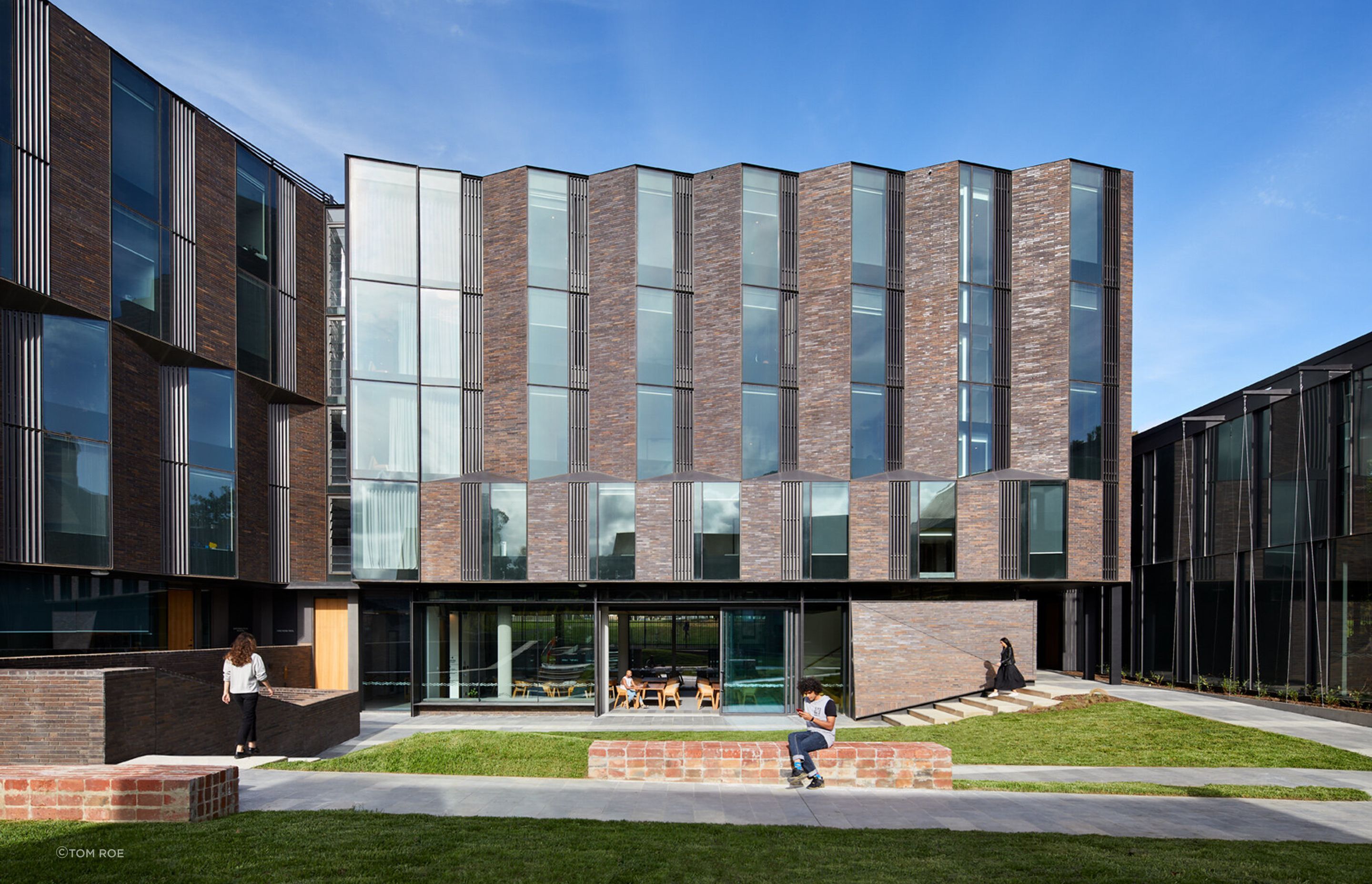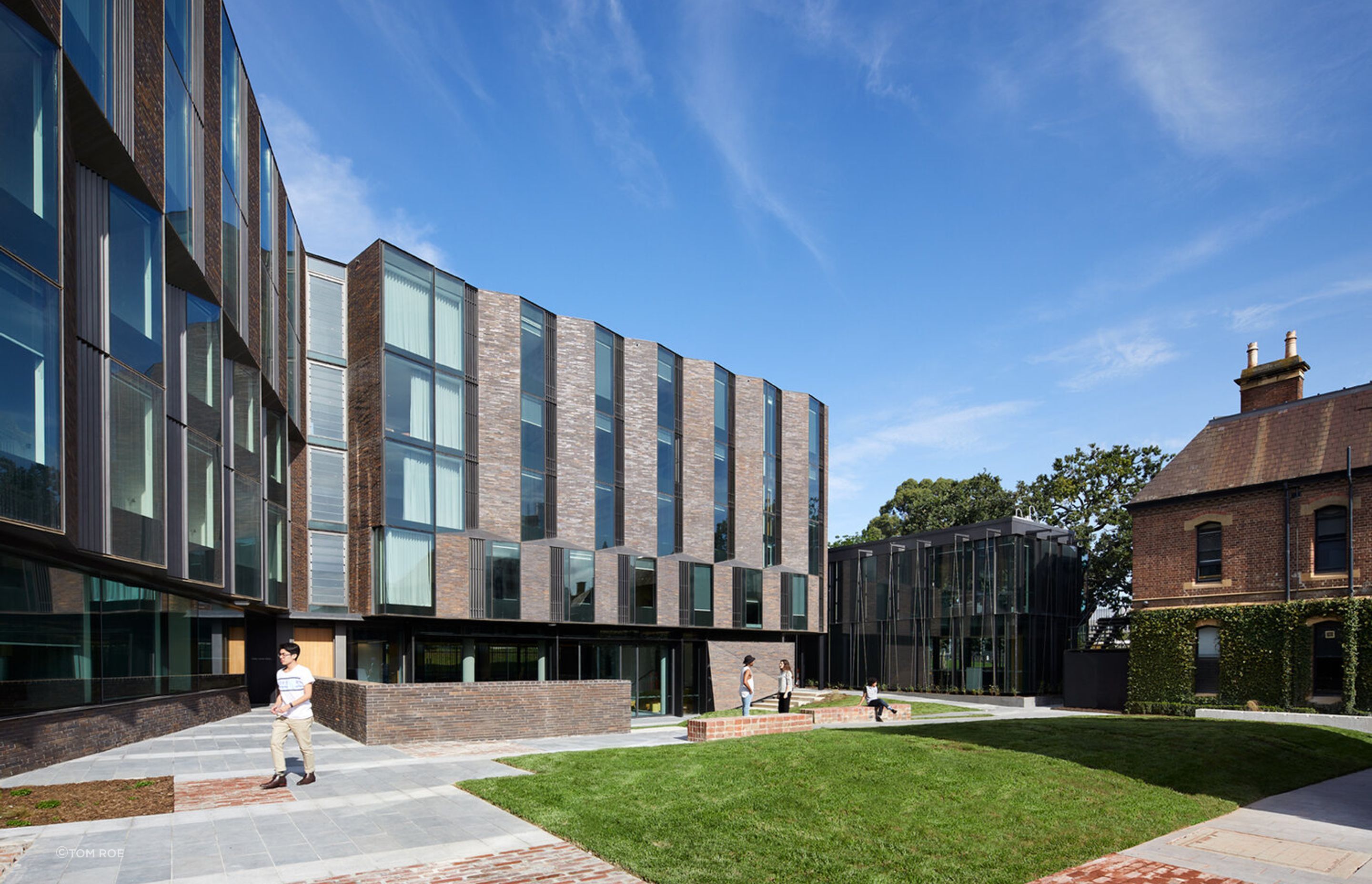Trinity College Student Accommodation, Melbourne
By Krause Bricks

Bricks: Krause Emperor Bricks in Grampians Blues
Designer: Hayball Architects
Krause Bricks supplied by: Robertsons Building Products
Photography: Tom Roe
Trinity College, the first residential college at the University of Melbourne, recently unveiled a stunning new student accommodation building at the University of Melbourne Parkville campus. Designed by Hayball Architects, the 100-bed facility and external landscape precinct features Krause Emperor Bricks in Grampians Blue.



We’re immensely proud of our new residential building, and can’t wait to unveil it to the public. This building is more than a pretty facade. Top to bottom, it has been designed with a firm focus on sustainability. A rainwater harvesting system and large array of solar panels help to harness the power of the elements. Geothermal heating and cooling, along with double glazing throughout, keeps the building at a consistently comfortable temperature. Touches of recycled materials have been repurposed throughout the building – the courtyard wall, built with recycled sandstone from what lay before it, a particularly golden feature. And inside, the furniture chosen is not only stylish and elegant, but also largely from local manufacturers with sustainability credentials. - Trinity College




Recalling a sense of history and place was particularly important, we set out to transfer memory through the use of materials. For the facade, we opted for artisan Krause Bricks made locally in Stawell, Victoria. The texture and hand-crafted quality embeds contemporary architecture within its heritage culture. - Hayball Architects

Professionals used in
Trinity College Student Accommodation, Melbourne
More projects from
Krause Bricks
About the
Professional
Krause Bricks has been a family owned and run business since 1945. The traditional craftsmanship and methods of brickmaking have been passed down through three generations, with each one adding their own innovations and modernisations.
- Year founded1945
- ArchiPro Member since2023
- Follow
- More information





